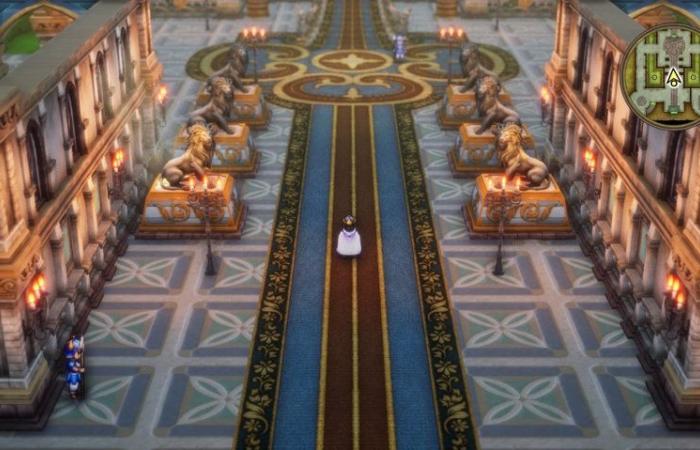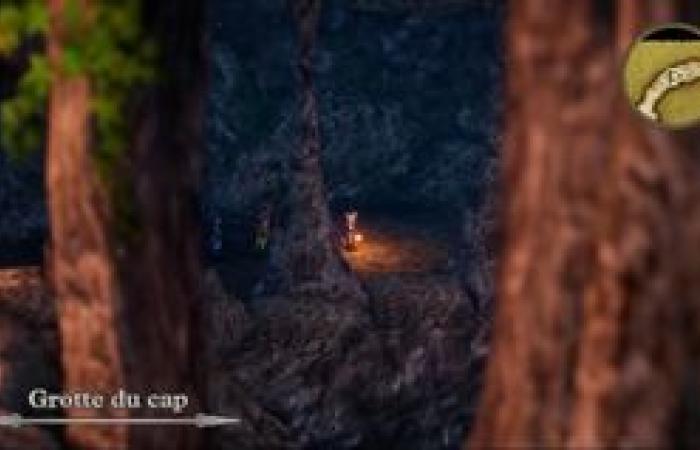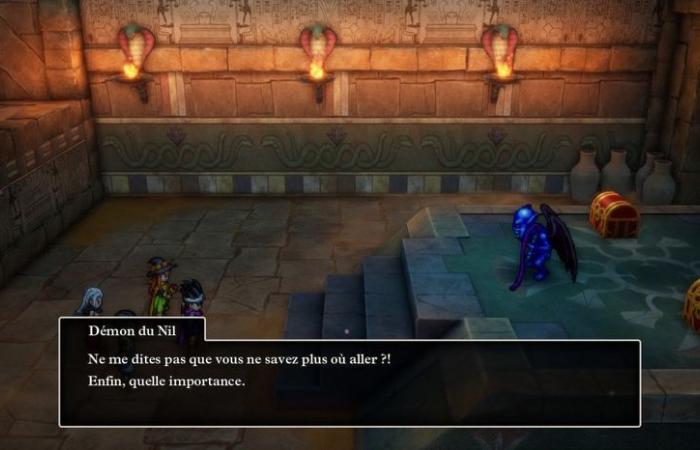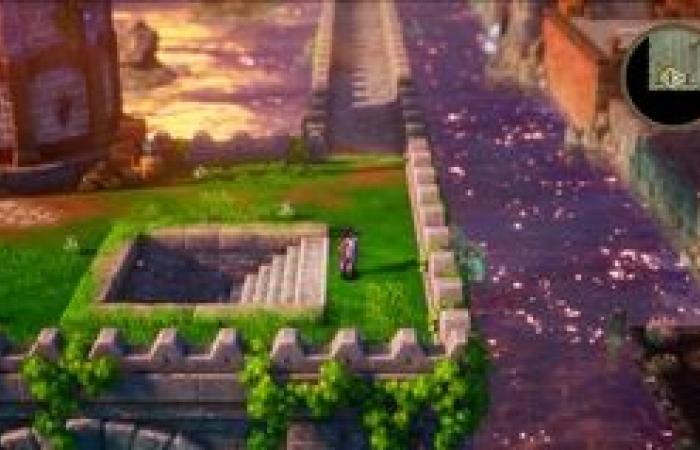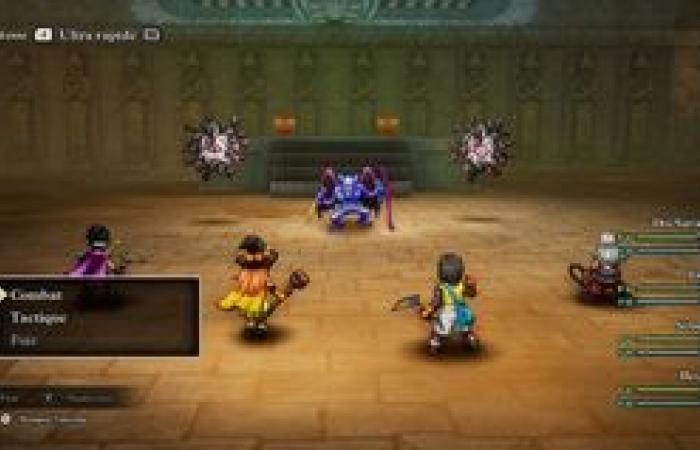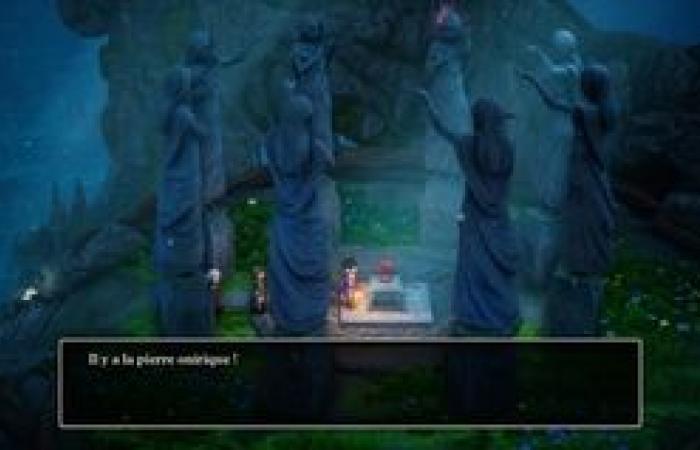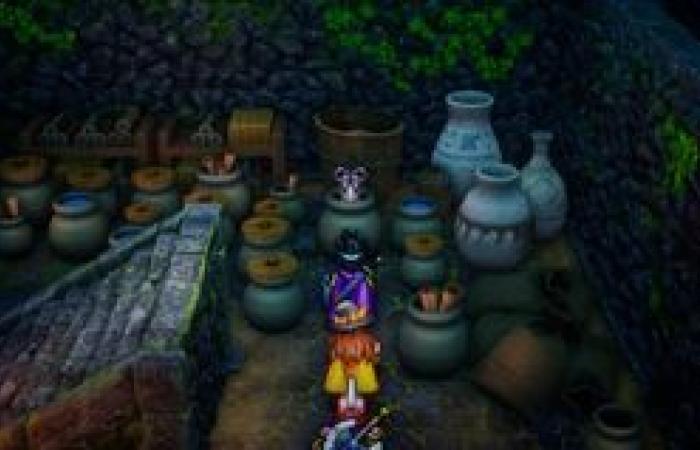Why start this series of new remakes with the third opus, and not with the first? Simply the chronology. Because if Dragon Quest III was indeed released after the first two, it is a prequel, the real beginnings of the Erdrick trilogy (Elric in French, Roto in Japanese) and incidentally the most ambitious and complete of three. Square Enix's decision to begin this series of redesigns with Dragon Quest III is therefore entirely logical, even if it may appear counterintuitive at first glance. Fortunately, we welcome the salutary choice of subsequently offering the first two episodes in a single pack, their lifespan being greatly reduced compared to this third opus. So, Dragon Quest III places the player in the guise of the protagonist, whose name can be chosen by the player, but whose Dragon Quest lore considers it fashionable to give him the pretty medieval nickname of Erdrick. The latter sets off on an adventure, following in the footsteps of his father Ortega, a courageous warrior whose exploits left an imprint not only on his original village Aliahan, but also on the rest of the world. Aged 16, Erdrick has one goal: to defeat Baramos, the archdemon threatening the balance of the world and responsible for the disappearance of his father.
By its legendary conciseness (less than the two previous opuses, certainly), the scenario of Dragon Quest III is a clear testimony to another era, one where we went straight to the point, without superficial convolutions to add minor issues. Here, there is a villain, known from the game's prologue, and the goal is to defeat him by following in the footsteps of the hero's father. It's clear, clean, precise, and reminiscent of a more innocent time: that of childhood. In addition to this simple narrative, this remake of Dragon Quest III is an ode to our younger years, and more precisely to the nostalgia of any player. Controversies aside, in the field, Koichi Sugiyama has always been able to establish himself as a master, his soundtracks constantly calling on a clever antinomic mix between melancholy and candor, so particular to the series. It only takes a few seconds Dragon Quest III HD-2D Remake to rediscover a time that we never knew, a nostalgia of a chimera yet so real for any kid from the 90s who had the chance to touch the original material. Music is what makes and breaks a Dragon Questand there is no doubt that we have here a vibrant tribute to the license.
Sublime music, a concise storyline: what factor is missing from the triptych to give the feeling of playing an ancient treasure, found after years? Its pitfalls, of course! Because yes, despite the addition of many QOL options, certain flaws of the original game are still there. Fans of the series know this: when a character dies during the first hours of Dragon Questit will be necessary to return to town to bring him to the sanctuary or to a priest in order to resurrect him. So, if you are in the middle of a dungeon and one of your team members succumbs to a little too insistent blows from angry enemies, you will have to turn around, then return on foot to the village (or use a chimera wing), to finally take the opposite path, at the risk of falling into the middle of the dungeon again. This constant back and forth tends to make the gaming experience a bit disjointed, at least for the first 10 hours. Note, however, that this time, if you lose a fight against a boss, it will be possible to take your revenge instantly, rather than having to go all the way back from the save point located in town.
Subsequently, several practical tools will be unlocked to make everything easier: the priest of our team and the main character will be able to resurrect an ally directly from the menu, without having to return to town. But then another problem arises: mana. Crossing dungeons requires managing this limited resource well, in what we will henceforth call Persona syndrome, as long as we appreciate anachronisms. Mana is a rare commodity, the items allowing it to be filled being rare and above all more practical for collecting money from the merchant. Thus, despite the possibility of bringing a character back to life in the middle of a dungeon, it will be necessary to do so sparingly, and in the event of too much loss of mana, a small additional return trip to town will be necessary..
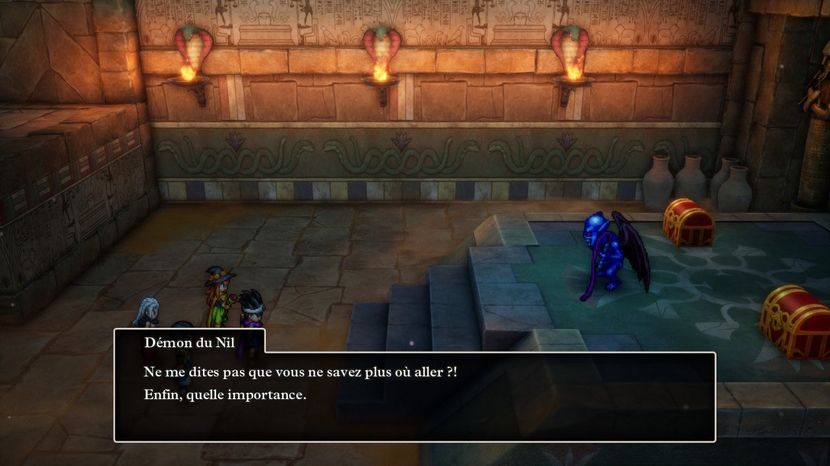
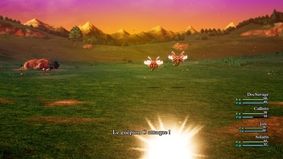 If these pitfalls will remind the most experienced players of childhood traumas, numerous improvements make everything much less indigestible. First, chimera wings and teleportation can now be used indoors, which means that it is now possible to teleport out of a bad situation (in the middle of a dungeon for example) without having to do everything again on foot (and most certainly fall in battle). Overall, chimera wings are more numerous than in the original game as well. Furthermore, to make exploration easier, a quest marker can now indicate the position of the next objective allowing the story to advance on the world map. Remember that in the original game, it was a bit haphazard.
If these pitfalls will remind the most experienced players of childhood traumas, numerous improvements make everything much less indigestible. First, chimera wings and teleportation can now be used indoors, which means that it is now possible to teleport out of a bad situation (in the middle of a dungeon for example) without having to do everything again on foot (and most certainly fall in battle). Overall, chimera wings are more numerous than in the original game as well. Furthermore, to make exploration easier, a quest marker can now indicate the position of the next objective allowing the story to advance on the world map. Remember that in the original game, it was a bit haphazard.
To allow the player to never forget the dialogues that he considers important, he can also simply press the Start button to retain the dialogue in memory, and access it at any time. Useful for remembering a current quest, for example. We will regret one thing, even if we must admit that we certainly did not expect a revolution in the license with a remake: the menus are still not very intuitive and not very pleasant to navigate. It's a classic Dragon Quest, and at this level, we should almost salute the self-sacrifice in the refusal to conform to the new possibilities offered by the genre.
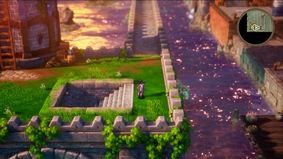 The fights are also not left out in terms of practical additions: if they are still random, they can now be drastically accelerated, which will not fail to delight veterans of the license, accustomed to pounding the A button to make go through combat dialogues more quickly, to no avail. In addition to being accelerated, they can again be made automatic, by specifying a tactic per character (full attack, defensive tactic, focus on spells or healing, etc.). This also makes exploring the dungeons and the map much more enjoyable, in addition to offering a faster option for farming enemies and leveling up.
The fights are also not left out in terms of practical additions: if they are still random, they can now be drastically accelerated, which will not fail to delight veterans of the license, accustomed to pounding the A button to make go through combat dialogues more quickly, to no avail. In addition to being accelerated, they can again be made automatic, by specifying a tactic per character (full attack, defensive tactic, focus on spells or healing, etc.). This also makes exploring the dungeons and the map much more enjoyable, in addition to offering a faster option for farming enemies and leveling up.
Note that two additional difficulty modes have been added to this remake: thus, the difficulty of the original game here becomes the most complicated mode, “draconian quest”. A normal mode makes things a little simpler, and the easy mode aims to make the playable characters simply invulnerable: they will never fall below 1 HP. This is the preferred mode if you want to enjoy a stress-free experience. As part of this test, we played the entire game in the “Draconian Quest” mode, which still seemed simpler than the original game. And for good reason: with the various QoL additions (such as the possibility of speeding up combat), it was much easier to level up and thus defeat enemies with a certain ease.
 In addition to these new features to make the experience a little smoother, Dragon Quest III HD-2D Remake offers a completely new vision of the game universe, thanks to completely revisited visual environments. The HD-2D, Square Enix's golden goose, strikes again here, but turns out to be less striking than its predecessors. Thus, for the environments, the development team chose to abandon pixel art in favor of smoothed 3D decorations, whether buildings or the world map. To pay tribute to the late Akira Toriyama, the game's characters remain in pixel art, whether we evoke enemies during combat, non-playable characters or the protagonists. This mix between pixel-art for the character design and a 3D environment works wonderfully, even if it means being a little less sparkling than Octopath Traveler 2 for example. This is a good thing: to pay homage to a work with already well-established references and atmosphere, the choice of simplicity allows us not to get lost in useless visual considerations far removed from the original game.. As with the music, the visuals have been modernized, without losing what made their essence. Note that, for the purposes of this test, we played the game exclusively on PC and Steam Deck, without encountering any technical issues during our 35 hours of play (to complete it 100%).
In addition to these new features to make the experience a little smoother, Dragon Quest III HD-2D Remake offers a completely new vision of the game universe, thanks to completely revisited visual environments. The HD-2D, Square Enix's golden goose, strikes again here, but turns out to be less striking than its predecessors. Thus, for the environments, the development team chose to abandon pixel art in favor of smoothed 3D decorations, whether buildings or the world map. To pay tribute to the late Akira Toriyama, the game's characters remain in pixel art, whether we evoke enemies during combat, non-playable characters or the protagonists. This mix between pixel-art for the character design and a 3D environment works wonderfully, even if it means being a little less sparkling than Octopath Traveler 2 for example. This is a good thing: to pay homage to a work with already well-established references and atmosphere, the choice of simplicity allows us not to get lost in useless visual considerations far removed from the original game.. As with the music, the visuals have been modernized, without losing what made their essence. Note that, for the purposes of this test, we played the game exclusively on PC and Steam Deck, without encountering any technical issues during our 35 hours of play (to complete it 100%).
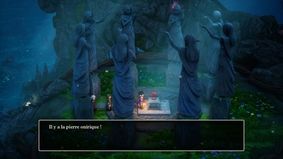 Finally, let's address the main novelty of this Dragon Quest III HD-2D Remake in terms of content: the monster arena. Let's say it straight away: if you were counting on it to offer you a completely new experience, you will very quickly become disillusioned. The arena encounters are few in number, and the addition is overall relatively superficial, in addition to being far too easy to complete. Certainly, the novelty allows you to discover new secrets (monsters are in fact hidden almost everywhere in the game), but the purpose is so uninteresting that it only offers a very limited feeling of reward. This is actually quite symptomatic of the game as a whole.
Finally, let's address the main novelty of this Dragon Quest III HD-2D Remake in terms of content: the monster arena. Let's say it straight away: if you were counting on it to offer you a completely new experience, you will very quickly become disillusioned. The arena encounters are few in number, and the addition is overall relatively superficial, in addition to being far too easy to complete. Certainly, the novelty allows you to discover new secrets (monsters are in fact hidden almost everywhere in the game), but the purpose is so uninteresting that it only offers a very limited feeling of reward. This is actually quite symptomatic of the game as a whole.
To compare, let's take the example of Star Ocean The Second Story R: the latter was not content with renewing, modernizing. It has completely overhauled its combat system, making additions right down to its core, changing the gaming experience in substantial ways. This remake of Dragon Quest III would have done better to take inspiration from it, because the simple addition of a monster arena mode that will take up an hour of your time for the entire duration of the experience can quickly amount to simple laziness, an excuse to point out: “but yes, look, we added content!” “.
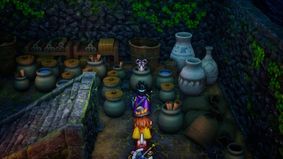 These grievances aside, there is absolutely no doubt that this remake of Dragon Quest III is the most complete, most pleasing to the eye and most successful experience of the title compared to the original material. But it could have been so much more. Hopes only invite disappointment from those who formulate them, just like this test, which must be measured with parsimony.. As long as you have never played a Dragon Quest of your life and you want to start the saga with a title close to the original experience, this remake seems ideal. It's also a less time-consuming solution compared to the sixty hours required to complete the other recent gateway, Dragon Quest XI.
These grievances aside, there is absolutely no doubt that this remake of Dragon Quest III is the most complete, most pleasing to the eye and most successful experience of the title compared to the original material. But it could have been so much more. Hopes only invite disappointment from those who formulate them, just like this test, which must be measured with parsimony.. As long as you have never played a Dragon Quest of your life and you want to start the saga with a title close to the original experience, this remake seems ideal. It's also a less time-consuming solution compared to the sixty hours required to complete the other recent gateway, Dragon Quest XI.

